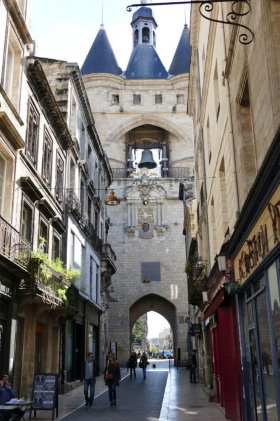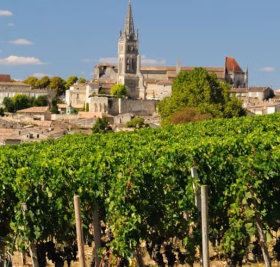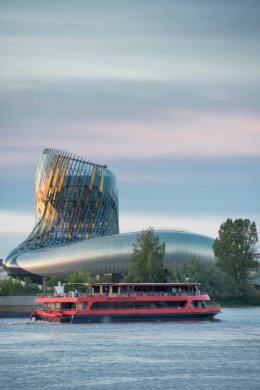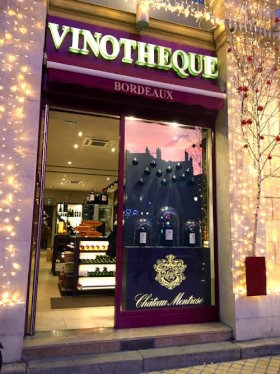Bordeaux city facts
At the heart of the Bordeaux wine country, Bordeaux is the world' capital of wine. Two hours from Paris by train, it is a World Heritage Site with many great things to do. Discover one of the world's finest cities. Famous places in France.
Bordeaux City facts
Bordeaux City is a city in the south west of France near the Atlantic Ocean. It has about 230,000 inhabitants. About 750,000 people live in the Bordeaux Metropolitan area around the city. The city has a famous university and has a diversified economy with strong points in defense and aeronautics. Bordeaux has a temperate oceanic climate.
The city is most of all known for its vineyards. Indeed, Bordeaux inherited its wealth from wine and from trade with the overseas in the 18th century, including wine trade and the so-called triangular trade. Its historic center, a magnificent Unesco World Heritage Site, is the largest 18th century historic center in France. With an insolent dynamism, the city metamorphoses since the 1990s through new projects: the tramway, the restoration of houses, the rehabilitation of the quays providing pedestrian access to the Garonne river and new pedestrian areas.
Today, Bordeaux seduces as much its inhabitants as the visitors, by its beauty, chic and festive atmosphere and animation as a big city of the south.

La Grosse Cloche in Bordeaux City
Bordeaux wine tours
Bordeaux is the world's most famous vineyard. The excellence of Bordeaux in red wines has never been surpassed. Moreover, the Bordeaux wine country is lovely and the city of Bordeaux is a beautiful city. Bordeaux map.
Although Bordeaux is 600 km from Paris, it is possible to do one day Bordeaux wine tours from Paris. Get to Bordeaux by superfast train from Paris and board a local tour of the vineyard with a guide.
We recommend the half-day excursion to Saint-Emilion from Bordeaux.

Discover Saint-Emilion village near Bordeaux
La Cité du Vin
La Cité du Vin has been conceived as a cultural and leisure site dedicated to wine as a cultural and living heritage. It offers a spectacular journey around the world, through the ages, in all cultures and all civilizations, in the heart of a stunning architecture.
Open January 1st to March 31st, every day from 10am to 6pm. Closed on Wednesdays 10, 17, 24, 31 January and 7 February. April 1st to August 31st, every day from 10am to 7pm. September 1st to December 31st, from Monday to Friday except school holidays from 10am to 6pm, weekends and during the school holidays from 10am to 7pm.
Bordeaux 33000 France
The 7 restaurant, located on the seventh floor of La Cité du Vin provides a breathtaking view of Bordeaux. It serves dishes made from regional products, that the Chef accommodates to the flavors of the world. Wine comes from 50 countries with more than 500 references.

La Cité du Vin in Bordeaux City
Best Bordeaux wine store
The Vinothèque de Bordeaux is an iconic wine store very close to the tourist office in the heart of the city.
If you are looking for a rare and prestigious wine, head to this sanctuary which has a unique collection of fine and old wines. The Vinothèque de Bordeaux opened its doors in 1973. Located opposite the Conseil Interprofessionnel du Vin de Bordeaux, it became the iconic wine merchant in the city center. The online sales activity was launched in 2007 to offer all wine lovers the quality and richness of their selection. On the Bordeaux Wine Web site, you can choose from a wide selection of Bordeaux, French and foreign wines, champagnes and spirits. There is a unique collection of fine wines.
Bordeaux 33000 France

La Vinothèque de Bordeaux
Bordeaux wine history
The appearance of the vine in the Bordeaux region dates back to the first century of our era when the Bituriges Vivisques, a tribe of Celtic warriors, decided to plant their own vineyard with a new grape variety more resistant to cold, Biturica, ancestor of the grape varieties Cabernets. In 1152, Aliénor, Duchess of Aquitaine, married Henri Plantagenet, future king of England. From then on, very important commercial exchanges were born: the English exported food, textiles and metals, and imported Bordeaux wines. They call it Claret because of its light color. The size of the English fleet and the ease of access to Bordeaux harbour via the Gironde estuary favored wine shipments by sea and allowed the development of the vineyards and the harbour. At that time, shipments were made in barrels with a capacity of 900 liters. The barrel subsequently became the international unit of volume for the tonnage of ships.
The 17th century witnessed the appearance of new customers: the Dutch, the Hanseatics and the Bretons. The Dutch inaugurated different trading habits, as they bought a lot of wine, which they distilled in their warehouses. The people of Bordeaux then began to supply, in addition to the traditional Clarets, dry and sweet white wines intended for distillation. In the 18th century, the Islands of America (St-Domingue and the Lesser Antilles) ensured the growth of Bordeaux wine exports. Through this colonial traffic, Bordeaux experienced extraordinary prosperity until the Revolution. England, for its part, did not represent more than 10% of Bordeaux wine exports, but it brought fashionable fine wines sought after by London's high society. At the same time, the first corked and sealed bottles appeared.
In the middle of the 19th century, a terrible disease struck the vineyard: powdery mildew. In 1857, it was discovered that sulfur treatment could curb the disease. Once the danger of powdery mildew had been warded off, the Gironde vineyards entered an era of prosperity as evidenced by the famous classification of 1855, listing some of the Gironde wines : Médoc, Sauternes, Haut-Brion in the Graves. The Industrial Revolution and the development of a free trade spirit among merchants and producers contributed greatly to the prosperity of Bordeaux. It reached its peak between 1865 and 1887 with an increase in production and an increase in exports to Germany, Scandinavia, Belgium, the Netherlands and England.
At the end of the 19th and beginning of the 20th, the vineyard experienced a new crisis, that of fraud and falling prices. To guard against this, the Girondins participated in the development of national legislation (1911) on the origin of wines, which delimits appellation areas. This delimitation lead, in 1936, to the creation of the INAO (Institut National de Appellations d'Origine) and to the AOCs governed by "control decrees" which specify precise production conditions: geographical area, grape varieties, yield, degree , cultivation and winemaking method. AOCs represent 97% of Bordeaux production. New classifications was created for the Graves, then for St-Emilion from 1955. After the terrible frosts of 1956, the vineyard gradually regained its dynamism, helped in particular by the increase in demand throughout the world. Aging and bottling have contributed a lot to this. Oenological techniques have made immense progress, like those of agronomy. Harvests are estimated on average around 6 million hectolitres.
